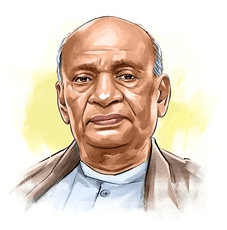TABLE OF CONTENT
ToggleHISTORICAL BACKGROUND
Hey Mumbai University IDOL students! Today, we delve into POLITICS OF MODERN MAHARASHTRA , specifically focusing on “HISTORICAL BACKGROUND”. We’ll explore some important stuff like the J.V.P. Committee’s report, the impactful Samyukta Maharashtra movement, and the social reform movements in India. Plus, we’ll unwrap the unique idea that defines Maharashtra. So, get ready for an exciting journey through the past!
First up, let’s talk about the J.V.P. Committee’s report. This report, from 1949, was like a big step in changing how states are organized based on language. We’ll check out how these ideas were put into action, the problems they faced, and what effects they had on Maharashtra’s politics.
Next, we’ll explore the Samyukta Maharashtra movement. It was a powerful movement that helped create Maharashtra. We’ll also peek into the social reform movements that tackled issues like the caste system and women’s rights. These movements were like superhero efforts to make things fairer in society.
Finally, we’ll discover what makes Maharashtra special. We’ll look at its history, culture, and language that all come together to create this unique idea of Maharashtra. It’s like understanding what makes a place feel like home. So, Mumbai University TYBA IDOL students, get ready to learn about –”HISTORICAL BACKGROUND” with customized idol notes just for you. Let’s make this journey into the world of agriculture an engaging and enlightening experience for everyone!


QUESTION 1:- Critically comment: On report of JVP Committee
Introduction:
We’re diving into the historical waters of the J.V.P. Committee and its significant role in reshaping India’s linguistic landscape. Imagine 1949, where this committee proposed creating states based on languages, stirring up a storm of change. Our mission is to critically analyze the effectiveness of their recommendations, understand the hurdles faced during implementation, and explore the lasting impact, particularly in the vibrant state of Maharashtra.
Critical Analysis of J.V.P. Committee’s Recommendations:
1. Implementation Challenges:
- Swift implementation hit roadblocks, with the linguistic reorganization process taking several years.
- Delays stemmed from various reasons, providing insights into the challenges faced during the translation of recommendations into actionable steps.
2. Controversies and Concerns:
- The committee’s recommendations sparked controversies, raising concerns about potential impacts on national unity.
- Analyzing these concerns offers a glimpse into the broader debate surrounding linguistic reorganization and its implications for India’s diverse fabric.
Long-Term Implications:
1. Political and Social Dynamics:
- A critical analysis explores how the committee’s report influenced the political and social dynamics of Maharashtra.
- Understanding the region’s response to linguistic reorganization contributes to assessing the long-term impact on Maharashtra.
2. Broader Linguistic Reorganization Movements:
- The report’s significance isn’t confined to Maharashtra; it influenced linguistic reorganization movements across India.
- Examining its role in shaping broader trends provides a comprehensive understanding of its impact on India’s linguistic map.
Conclusion:
The J.V.P. Committee’s report wasn’t just a document; it was a catalyst for change in India’s linguistic landscape. Our journey today involved evaluating the implementation challenges, diving into controversies, and understanding the ripple effects on the political and social dynamics of Maharashtra. Beyond its regional impact, the committee’s recommendations had a far-reaching influence, shaping linguistic reorganization movements across the vast tapestry of India. This critical analysis allows us to appreciate the committee’s role in addressing linguistic reorganization demands and understanding its enduring impact on the Indian subcontinent.
QUESTION 2 :- Discuss the Impact of Samyukta Maharashtra movement on formations of States
Introduction:
The Samyukta Maharashtra movement holds a special place in Indian history as a significant social and political initiative. It had a clear goal – the unification of Marathi-speaking regions. This movement not only left an indelible mark on the linguistic reorganization of states in India but also played a pivotal role in establishing the state of Maharashtra.
Impact of Samyukta Maharashtra Movement:
1. Linguistic Reorganization: The movement had a profound impact on the way states were organized in India. It advocated for states based on shared language, setting the stage for the concept of linguistic states. This shift in perspective was a game-changer.
2. Creation of Maharashtra: The success of the Samyukta Maharashtra movement resulted in the birth of the state of Maharashtra. It wasn’t just about drawing borders on a map; it was about the movement’s ability to rally people, fostering unity among Marathi speakers. Understanding how this was achieved reveals the movement’s effectiveness.
3. Leadership and Public Mobilization: Behind the success of the movement were dedicated leaders who skillfully mobilized public sentiment. The strategies employed and the leadership’s role played a crucial part in the movement’s impact. It was more than just a political initiative; it was a collective effort that resonated with the masses.
Political and Social Dynamics:
The movement didn’t just reshape political boundaries; it also had a profound impact on the social fabric by fostering a distinct Marathi identity. Examining how the movement contributed to the emergence of this identity provides a nuanced understanding of its far-reaching influence.
Broader Implications:
The success of the Samyukta Maharashtra movement became a guiding light for other linguistic regions aspiring for statehood. Its implications extended beyond Maharashtra, serving as a model for similar movements across India. Exploring these implications broadens our understanding of linguistic reorganization in the country.
Conclusion:
The Samyukta Maharashtra movement was a catalyst for change, shaping the linguistic reorganization of India. It didn’t stop at creating Maharashtra; it gave birth to a distinct Marathi identity and set a model for linguistic movements. This movement showcases the transformative power of linguistic-based statehood aspirations in post-independence India. As we reflect on its impact, we recognize the enduring legacy of a movement that forever altered the political and social landscape of the nation.
QUESTION 3 :- Write about Issues which gave rise to Social Reform movements in India
Introduction:
India’s social reform movements sprouted as responses to deeply rooted issues like the oppressive caste system, social inequality, and the exploitation of lower castes. Visionaries such as Mahatma Jyotiba Phule and Justice M.G. Ranade spearheaded these movements with the aim of challenging traditional norms and fostering a more egalitarian and just society.
Issues Addressed by Social Reform Movements:
-
Caste System and Discrimination: The social reform movements took a stand against the rigid caste system and the discrimination faced by lower castes. Their goal was to dismantle caste-based oppression and promote social equality.
-
Women’s Rights: Recognizing the challenges faced by women in traditional society, social reformers championed for their rights. Their efforts aimed to improve the status of women by challenging regressive practices and advocating for the education of girls.
-
Educational Reforms: Social reformers addressed the lack of educational opportunities for marginalized sections of society. They worked towards making education accessible to all, irrespective of caste or gender.
Prominent Social Reformers:
-
Mahatma Jyotiba Phule: A key figure, Phule vehemently opposed the caste system and worked towards the emancipation of lower castes, laying the foundation for social equality and justice.
-
Justice M.G. Ranade: Focusing on educational reforms and women’s upliftment, Ranade’s advocacy for social and economic justice contributed significantly to the broader reform movements.
Impact on Indian Society:
-
Challenge to Traditional Social Order: The social reform movements questioned and re-evaluated the entrenched social hierarchy, challenging the status quo and fostering a climate of change.
-
Political and Social Reforms: These movements played a crucial role in shaping India’s political and social landscape. They contributed to the emergence of a more egalitarian and democratic society by advocating for equal rights and opportunities.
Conclusion:
The social reform movements in India, led by figures like Mahatma Jyotiba Phule and Justice M.G. Ranade, addressed critical issues like the caste system, social inequality, and the status of women. These movements, with their significant impact, challenged traditional norms, paving the way for social and political reforms. Their influence on the emergence of a more egalitarian and democratic India remains pivotal in the historical narrative of social transformation.
QUESTION 4 :- Explain the Idea of Maharashtra
Introduction:
The concept of Maharashtra isn’t just a place on the map; it’s a rich tapestry woven with the threads of culture, language, and history. Maharashtra, home to Marathi-speaking communities, stands as a unique contributor to India’s diverse socio-political landscape, boasting a vibrant cultural heritage and a distinctive identity.
Factors Shaping the Idea of Maharashtra:
-
Cultural Heritage: Maharashtra’s identity is like a treasure chest filled with cultural gems – literature, art, and traditions that make it stand out from the rest.
-
Historical Significance: The story of Maharashtra isn’t just about places; it’s about people and events that shaped its destiny. Leaders and movements advocating for the unity of Marathi-speaking regions played a crucial role in creating the idea of Maharashtra.
-
Linguistic Unity: Imagine a big family where everyone speaks the same language. That’s the linguistic unity of Marathi-speaking people, a powerful force that binds them together, emphasizing the importance of language in shaping their identity.
Formation of Maharashtra:
The idea of Maharashtra wasn’t just a concept; it was a driving force behind the formation of the state. People wanted their unique linguistic and cultural identity to be recognized, and this desire played a key role in shaping the boundaries of Maharashtra.
Continued Influence:
Even today, the idea of Maharashtra continues to cast a long shadow, influencing how people see themselves. It’s like a source of pride, inspiration, and unity, creating a sense of belonging that goes beyond just geographical boundaries. This influence is what makes being Marathi a unique and cherished identity.
Conclusion:
In wrapping up, Maharashtra isn’t just a state; it’s a story, a celebration of cultural heritage, history, and linguistic unity. Shaped by leaders and historical events, the idea of Maharashtra played a pivotal role in defining its borders. Today, it stands tall as a source of pride and unity, reflecting the distinctive cultural and linguistic contributions of the Marathi-speaking regions to the larger tapestry of India.
Important Note for Students :– Hey everyone! All the questions in this chapter are super important!
